Keytek CTS-2000- Owned from September 2002-present, Serial number 1263
The Keytek line was an attempt at reviving Siel around 1987. There were several models produced, the CTS-1000 (boring 8 voice synth, preset only), CTS-2000, CTS-5000 (piano-style keyboard), CTS-400 (4-octave keyboard, similar to CTS-1000?), and at several home keyboards (I know of the K-50 and K-60, perhaps there were more). As far as I can tell, the CTS-2000 is the only interesting model. The Keytek line didn't last long, as Siel went out of business and was bought by Roland. It's a fairly ugly synth, Obviously influenced by the DX7 design with membrane buttons and nasty 80's colors accenting its gray case. And it's fairly heavy considering the case is plastic.
The CTS-2000 was a very innovative synth but it didn't have any success. The basic premise of operation is that if single cycle waveform samples are taken from the attack, decay, and sustain portions of an instrument sample, they can be used to reconstruct the original sound while taking up much less space than a full sample (This is derived somewhat from the "timbre window" approach to additive synthesis). Thus the CTS-2000 uses three waveforms per oscillator, crossfaded together with simple envelopes. This is where the "Cross Table Sampled" name comes from. This method of sound creation is similar to wavetable or vector synthesis but I think the Wavestation is the only other synth that can do this (using wavesequencing). The patch editing is a bit strange too. The 24 patch select buttons double as menu page buttons. For each menu there are up to six parameters, which are edited from six data sliders. Having multiple data sliders is a nice idea, and the CTS-2000 certainly predated what is now a popular concept. The problem is that only one slider can be used at a time. This somewhat defeats the purpose of having all those sliders, and it makes editing patch names very frustrating. The CTS-2000 had another weird feature as well: the keyboard is split into five zones, one octave each, and they're all independently programmed. This is to aid the creation of keyboard splits, etc. but mostly it just gets in the way. There is a zone copy function and a global edit mode to make it a little easier (though it's still overcomplicated). Also there are convenient functions to copy data between oscillators, envelopes, pitch functions, and LFOs.
The architecture of the synth has a few interesting quirks: There are 8 voices, and for each voice there are two oscillators with three waveforms and two-stage envelopes to crossfade between them. Crossfading works one way only, and can't be controlled by the mod wheel, velocity, LFOs, etc. Pity, because this could have made things much more interesting. Each oscillator has its own detune page with tuning parameters and simple pitch envelopes. Then there is a 6-stage Korg style amplitude envelope for each oscillator (an unusual and welcome feature), and a resonant 4 pole low pass VCF with another 6-stage envelope. There are 3 LFOs, the first 2 dedicated to the oscillators and the third to the filter/VCA. Waveforms are saw, triangle, square, and random. The LFOs can go pretty fast and they have a nice initial level/final level/decay envelope for each, exactly like the Ensoniq ESQ-1 LFOs. (The main envelopes, plus the crossfade, pitch, and LFO envelopes add up to a total of 10 envelopes per voice!) Also the mod wheel can control each of the LFOs independently. Unfortunately they can't modulate the oscillators than more than a semitone. The third LFO can be routed to the filter and/or the VCA (the final VCA, not the levels for the individual oscillators) but routing it to the VCA results in a pretty weak effect (very mild tremolo at the maximum setting). Pitch wheel depth can be set independently for each oscillator but it will only bend +/- 3 semitones. Velocity can control the oscillator level and VCF envelopes independently, and turn the oscillators on or off (for velocity switching- strangely it can be set so that neither oscillator sounds, so the note can be completely silent). There's a menu for mono mode and monophonic portamento/glissando (unfortunately there's no legato mode- each new note retriggers the envelopes). There is also a level control and a fixed panning control, various copy functions, etc. Dynamic voice allocation can be turned on or off, which is kind of strange.
Internally the synth doesn't look very well built, typical for Siel, but unlike most of their synths it still works so they must have finally gotten something right. Also it doesn't have the NiCd battery leak problem that their earlier synths had. The CPU is a Texas Instruments TMS 7002, which is totally underpowered considering all the stuff going on inside. The DCOs are two SGS M114S chips, and the filters are CEM 3389s (same kind as early Waldorf Microwave models).
Now for the sound. This synth has a really interesting architecture so naturally it can make some interesting sounds that a lot of other synths can't. But it doesn't really have the lush sonic qualities of some synthesizers. I haven't analyzed it any but even the saw wave sounds dull and crappy compared to the waveforms on most other synthesizers. Many of the waveforms aren't particularly useful. There are a lot of guitar samples and things like that, where I would have prefered more synthetic waves (there's not even a square wave). And sometimes there's audible stepping in the waveform crossfades, envelopes, etc. (due to the underpowered CPU I would imagine). This doesn't mean it can't make good sounds, but it takes a bit of effort to get there. Occasionally there are also glitches and pops in the sound, presumably from the crossfades. The crossfade synthesis can produce fairly decent sounding acoustic instruments (better than other analog/digital hybrids, but still not useable), but most of the presets are pretty bad. The CTS-2000 seems best at strange digital evolving pad sounds. It doesn't make anything that sounds particularly "thick" but some sounds are quite nice. A built-in stereo chorus would have really helped the sound but external effects work just as well.
Also there are a few odd quirks about the case design:
The CTS-2000 name plate on the back is reversible- it has CTS-5000 on the other side.
On the panel above the LFO menus it says "LFO 1 to OSC. 1", "LFO 2 to OSC. 2", and "LFO 3 to OSC. 3". There isn't a third oscillator!
The midi thru jack on the back is labeled "TRHU", though it's spelled correctly on the top panel.
pictures:
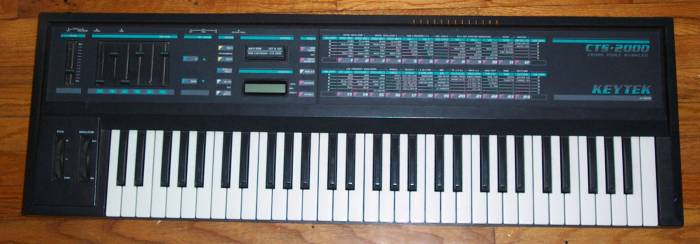

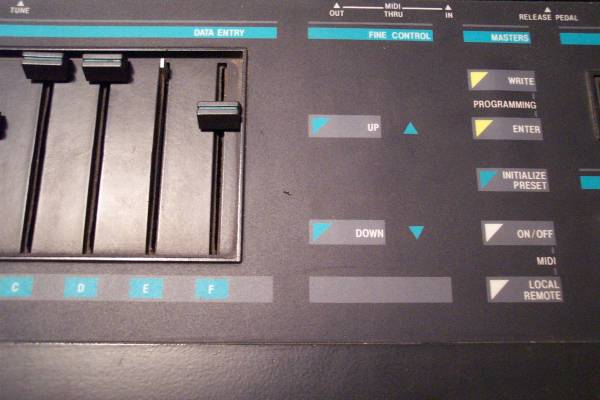
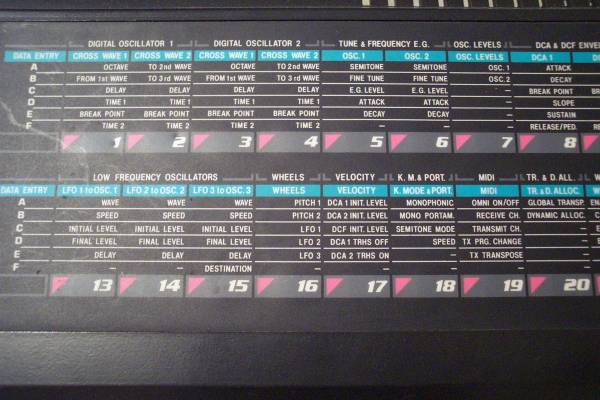
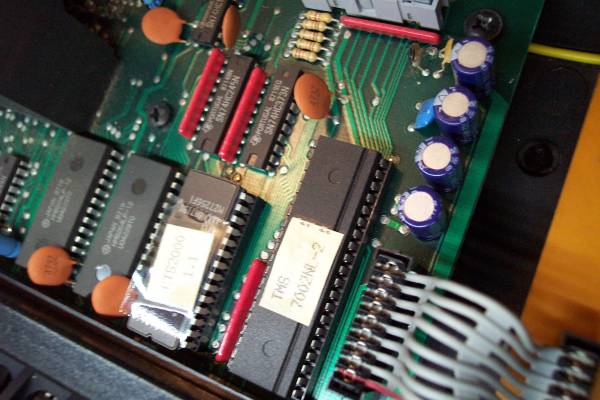
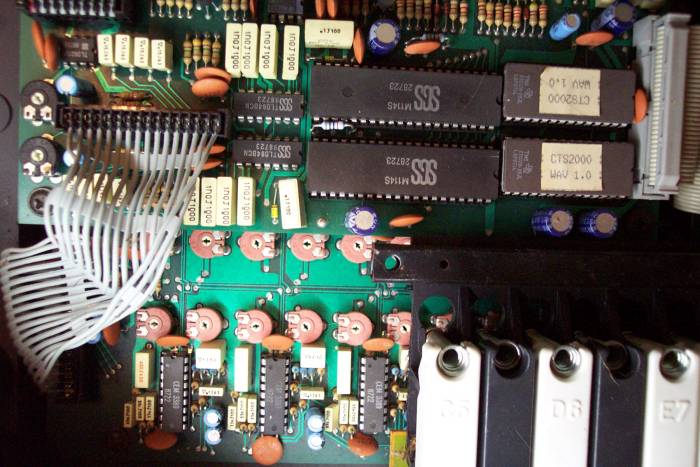

sounds:
CTS-2000-1- quick ambient demo, another one here
There's a nice CTS-2000 site which was made a little after I got mine. It includes a bunch of stuff from the manual: Keytek CTS 2000 - E
back to synth index
